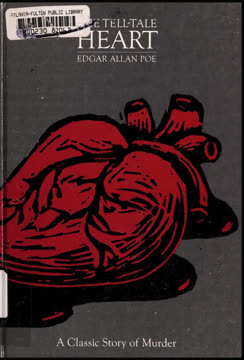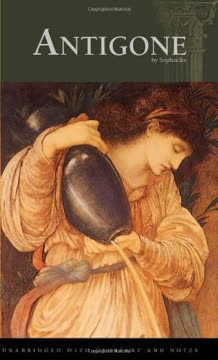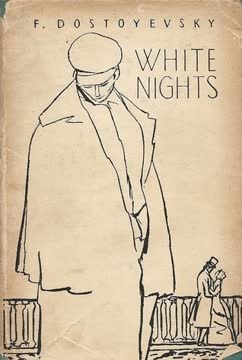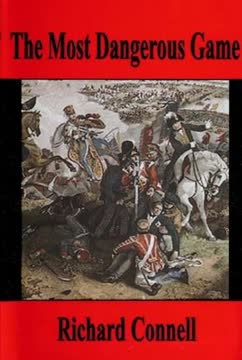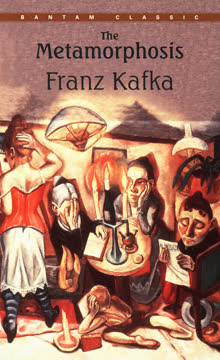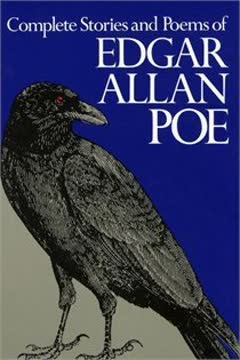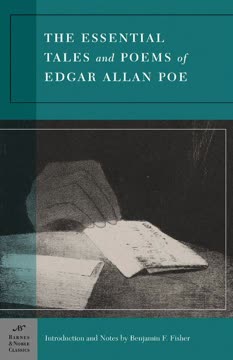Plot Summary
The Unbearable Eye
The narrator, whose identity remains ambiguous, insists on his sanity while describing an acute sensitivity to sound and sensation. He lives with an old man whom he claims to love, but is haunted by the man's "vulture eye"—a pale, filmy blue eye that fills him with irrational dread and loathing. The narrator's fixation on the eye grows into an all-consuming obsession, leading to the chilling resolve to rid himself of it forever. This is not a crime of passion or greed, but a psychological compulsion, a war against a symbol of mortality, vulnerability, or perhaps the narrator's own inner fears.
Midnight Intrusions
For seven nights, always at midnight, the narrator creeps into the old man's room, moving with painstaking slowness and care. Each night, he opens the door just enough to peer inside, shining a thin ray of lantern light upon the closed eye. The old man sleeps, unaware of the nightly visitor. The narrator's actions are methodical, almost ritualistic, and he takes pride in his cunning and patience, using these as evidence of his sanity. Yet, the nightly ritual is not about murder, but about waiting for the eye to be open—he cannot act until the "Evil Eye" is exposed.
The Eighth Night
On the eighth night, the narrator is more cautious and excited than ever. As he opens the door, the old man awakens, sensing a presence in the darkness. The tension is palpable; the narrator stands motionless for an hour, listening to the old man's terror. Eventually, the lantern's ray falls upon the open eye, and the narrator's fury is unleashed. The old man's fear, the darkness, and the narrator's own heightened senses converge in a moment of psychological and physical violence.
Heartbeats in the Dark
The narrator, driven to the brink by the sound of the old man's heart—described as a muffled, quickening drumbeat—attacks. The old man shrieks once before being smothered beneath the bed. The heart continues to beat, growing louder in the narrator's ears, until it finally stops. The narrator is both triumphant and oddly relieved, convinced that the "Evil Eye" will trouble him no more. Yet, the heart's sound lingers in his mind, a harbinger of guilt and unraveling sanity.
The Deed Concealed
The narrator dismembers the old man's corpse and hides the parts beneath the floorboards, taking pride in the cleanliness and cleverness of the act. There is no blood, no evidence—he is certain that no one could ever discover the crime. The narrator's sense of control and superiority is at its peak, and he feels invulnerable, even cheerful, as he completes the task.
The Police Arrive
In the early morning, three police officers arrive, responding to a neighbor's report of a shriek. The narrator welcomes them with exaggerated confidence, explaining that the old man is away and that the scream was his own, the result of a nightmare. He invites the officers to search the house, even bringing them into the very room where the body lies hidden beneath the floor. The narrator's composure is a mask, but beneath it, anxiety begins to stir.
The Sound That Grows
As the police sit and chat, the narrator begins to hear a faint, rhythmic sound—like a watch enveloped in cotton. The sound grows steadily louder, and the narrator becomes increasingly agitated, convinced that the officers must hear it too. He talks more rapidly, paces the floor, and becomes desperate to rid himself of the noise, which he believes is the old man's heart still beating beneath the floorboards.
Madness Unmasked
The narrator's composure unravels as the sound becomes unbearable. He imagines the officers are mocking him, aware of his guilt but feigning ignorance. The agony of the imagined heartbeats, combined with the pressure of the officers' presence, drives him to the brink. In a final, frenzied outburst, he confesses to the crime, demanding that the floorboards be torn up to reveal the hidden body and the "beating of his hideous heart."
The Old Man's Fate
The old man, whose only crime is possessing a disturbing eye, becomes the victim of the narrator's psychological torment. His final moments are filled with terror and confusion, as he senses an unseen threat but cannot comprehend its nature. His death is both sudden and senseless, a casualty of the narrator's inner demons.
The Narrator's Confession
The narrator's need to prove his sanity and his pride in his cunning are ultimately his undoing. The psychological pressure of guilt, symbolized by the relentless heartbeat, overwhelms his rational defenses. The confession is not the result of external discovery, but of internal collapse—a mind unable to bear the weight of its own crime.
Guilt's Relentless Drum
The story's climax is not the murder, but the narrator's psychological breakdown. The "beating heart" is both a literal and symbolic manifestation of guilt, a sound that grows louder the more it is denied. The narrator's attempt to silence the heart, and thus his conscience, only amplifies its power, leading to inevitable exposure.
The Nature of Sanity
Throughout the story, the narrator insists on his sanity, offering his methodical planning and acute senses as proof. Yet, his actions and perceptions reveal a mind at war with itself, unable to distinguish between reality and delusion. The story blurs the line between sanity and madness, suggesting that the most dangerous form of insanity is that which masquerades as reason.
Characters
The Narrator
The unnamed narrator is the story's central consciousness, whose insistence on sanity is belied by his actions and perceptions. He is hypersensitive, especially to sound, and fixates on the old man's "vulture eye" as the source of his torment. His psychological state is marked by paranoia, compulsion, and a desperate need for control. The narrator's relationship to the old man is ambiguous—he claims affection, yet is driven to murder by an irrational obsession. His development is a descent from calculated cunning to total psychological collapse, as guilt overwhelms his defenses and compels confession.
The Old Man
The old man is a passive figure, defined primarily by the narrator's perception of his eye. He is described as kind and trusting, with no apparent faults or offenses. His "vulture eye" becomes a symbol of mortality, weakness, or the narrator's own fears. The old man's terror on the final night is palpable, and his death is both tragic and senseless—a casualty of another's madness.
The Police Officers
The three officers are calm, courteous, and methodical, representing the rational world outside the narrator's fevered mind. They are not portrayed as suspicious or aggressive; their presence is almost incidental. Yet, their very normalcy and composure become unbearable to the narrator, whose internal chaos cannot withstand the pressure of their scrutiny.
The Neighbor
The neighbor, who hears a shriek in the night and alerts the police, is a silent but crucial figure. This character represents the outside world's capacity to intrude upon private madness, setting in motion the chain of events that leads to the narrator's exposure.
Plot Devices
Unreliable Narration
The story is told entirely from the narrator's perspective, whose insistence on sanity is contradicted by his actions and perceptions. This unreliable narration creates a sense of psychological claustrophobia, as readers are trapped within a mind that cannot be trusted. The gap between what the narrator claims and what he reveals is the engine of suspense and horror.
Symbolism of the Eye and Heart
The old man's "vulture eye" is more than a physical feature—it is a symbol of the narrator's deepest fears and obsessions. The beating heart, whether real or imagined, becomes the embodiment of guilt, conscience, and the inescapable consequences of crime. These symbols drive the narrative and shape the reader's understanding of the characters' inner lives.
Sound as Psychological Pressure
The narrator's acute sense of hearing is both a source of pride and a curse. The imagined sound of the heart, growing louder and more insistent, is a classic example of Poe's use of sensory detail to externalize psychological torment. The sound becomes a relentless force, driving the narrator to confession.
Dramatic Irony and Foreshadowing
From the outset, the narrator's protestations of sanity and rationality are undercut by his own words and actions. The careful planning of the murder, the pride in cunning, and the ultimate breakdown all foreshadow the inevitable collapse. The reader is invited to see through the narrator's self-deception, heightening the story's tension and horror.
Confession as Climax
Unlike traditional detective stories, the crime in "The Tell-Tale Heart" is not solved by investigation, but by the criminal's own conscience. The confession is not extracted by force or evidence, but by the unbearable pressure of guilt, symbolized by the beating heart. This device shifts the focus from external justice to internal psychological truth.
Analysis
Edgar Allan Poe's "The Tell-Tale Heart" is a masterful exploration of guilt, madness, and the fragile boundary between sanity and insanity. Through the voice of an unreliable narrator, Poe immerses the reader in a world where obsession becomes reality and conscience cannot be silenced. The story's power lies in its psychological depth: the murder is not motivated by greed or revenge, but by an irrational fixation on the old man's eye—a symbol open to myriad interpretations, from mortality to the gaze of judgment. The relentless heartbeat, whether real or imagined, is a brilliant metaphor for the inescapability of guilt, a sound that grows louder the more it is denied. Poe's use of sound, repetition, and claustrophobic narration creates an atmosphere of mounting dread, culminating in a confession that is both a surrender to conscience and a final act of self-destruction. The story endures as a timeless meditation on the human mind's capacity for self-deception, the destructive power of obsession, and the ultimate impossibility of escaping one's own guilt.
Last updated:
FAQ
Synopsis & Basic Details
What is The Tell-Tale Heart about?
- A Descent into Madness: The story follows an unnamed narrator who, despite vehemently claiming his sanity, becomes obsessed with the "vulture eye" of an old man with whom he lives. This irrational fixation drives him to meticulously plan and execute the old man's murder.
- Calculated, Covert Crime: For seven nights, the narrator stealthily enters the old man's room at midnight, shining a single ray of light onto the sleeping eye. His patience and cunning are presented as proof of his rationality, even as his motive remains purely psychological.
- Unraveling by Guilt: On the eighth night, the old man awakens, and the narrator, hearing what he believes is the old man's rapidly beating heart, commits the murder. He then dismembers the body and conceals it beneath the floorboards, only to be undone by his own escalating auditory hallucinations of the victim's heart, leading to a frenzied confession to the police.
Why should I read The Tell-Tale Heart?
- Masterful Psychological Thriller: Readers should delve into "The Tell-Tale Heart" for its unparalleled exploration of the human psyche, offering a chilling first-person account of obsession and guilt. It's a foundational text for psychological horror, demonstrating how internal torment can be more terrifying than external threats.
- Literary Craftsmanship Exemplified: Edgar Allan Poe's precise language, intense pacing, and masterful use of unreliable narration create a claustrophobic atmosphere that draws the reader deep into the narrator's disturbed mind. It's a short story that packs immense literary power, perfect for studying narrative technique.
- Timeless Themes of Conscience: The story delves into universal themes such as the nature of madness, the inescapability of guilt, and the fine line between sanity and delusion. Its enduring relevance makes it a compelling read for anyone interested in the darker aspects of human nature and the power of conscience.
What is the background of The Tell-Tale Heart?
- Gothic Literary Tradition: "The Tell-Tale Heart" is a quintessential example of American Gothic literature, a genre popular in the 19th century that explored themes of psychological decay, the supernatural, and the macabre. Poe, a master of this style, often focused on the internal terrors of the mind rather than external monsters.
- Poe's Personal Context: While not directly autobiographical, Poe's own life was marked by struggles with mental health, loss, and a fascination with the darker aspects of human experience, which often informed his fiction. His exploration of "over-acuteness of the senses" in the narrator echoes his broader interest in altered states of perception, as seen in other works like "The Facts in the Case of M. Valdemar."
- Critique of Rationality: The story can be seen as a subtle critique of Enlightenment-era faith in pure reason, suggesting that even the most "wise" and "cautious" plans can be undermined by irrational impulses and the overwhelming force of psychological distress. The narrator's meticulousness, intended to prove sanity, ironically highlights his profound derangement.
What are the most memorable quotes in The Tell-Tale Heart?
- "TRUE!—NERVOUS—very, very dreadfully nervous I had been and am! but why will you say that I am mad?": This opening line immediately establishes the narrator's unreliable voice and his desperate, yet ultimately futile, attempt to convince the reader of his sanity, setting the stage for the psychological drama.
- "It was not the old man who vexed me, but his Evil Eye.": This quote encapsulates the narrator's irrational obsession, highlighting that his motive is not personal animosity but a symbolic hatred for a perceived "Evil Eye," which he projects as the source of his torment.
- "Villains! I shrieked, 'dissemble no more! I admit the deed!—tear up the planks!—here, here!—it is the beating of his hideous heart!'": The climactic confession, driven by the unbearable auditory hallucination, reveals the ultimate triumph of guilt over the narrator's carefully constructed facade of composure, making it an iconic moment in literary history.
What writing style, narrative choices, and literary techniques does Edgar Allan Poe use?
- First-Person Confessional Tone: Poe employs a direct, intimate first-person narration, drawing the reader into the narrator's disturbed mind. This confessional style, filled with rhetorical questions and direct address ("Hearken! and observe how healthily—how calmly I can tell you the whole story"), creates a chilling sense of complicity and immediacy, making the reader a direct recipient of the narrator's unraveling thoughts.
- Sensory Overload and Repetition: Beyond just sound, Poe uses vivid sensory details to immerse the reader in the narrator's heightened perceptions. The description of the "thick darkness," the "single thin ray" of light, and the repeated emphasis on the narrator's "over-acuteness of the senses" (e.g., "Above all was the sense of hearing acute") amplify the psychological tension and blur the line between objective reality and subjective delusion.
- Psychological Pacing and Escalation: The story's structure meticulously builds suspense through a slow, deliberate pace in the initial surveillance, mirroring the narrator's "caution" and "foresight." This methodical build-up then rapidly accelerates during the murder and the police interrogation, reflecting the narrator's escalating terror and eventual psychological collapse, creating a powerful sense of inevitability.
Hidden Details & Subtle Connections
What are some minor details that add significant meaning?
- The "Death Watches": The narrator mentions hearing "death watches in the wall" while the old man is listening in terror. This seemingly minor detail subtly foreshadows the old man's impending death and the narrator's own morbid preoccupation with mortality, linking the external world's sounds to his internal anxieties.
- The Old Man's Shutters: The detail that the old man's room was "as black as pitch with the thick darkness (for the shutters were close fastened, through fear of robbers)" is significant. It highlights the old man's vulnerability and isolation, but also ironically provides the perfect cover for the narrator's nightly intrusions, turning a safety measure into a tool for his undoing.
- The Tub for Blood: The narrator's proud exclamation, "A tub had caught all—ha! ha!" after dismembering the body, reveals a chilling level of premeditation and a perverse pride in his "wary" nature. This detail underscores his detachment from the horror of his actions, focusing instead on the technical perfection of his crime, which ultimately proves insufficient to hide his guilt.
What are some subtle foreshadowing and callbacks?
- Narrator's Self-Diagnosis: The narrator's opening insistence on his "over-acuteness of the senses" ("The disease had sharpened my senses—not destroyed—not dulled them") subtly foreshadows his eventual auditory hallucination of the beating heart, which he attributes to this very acuteness, rather than madness. This early claim sets up the central irony of his unreliable narration.
- Shared Groan of Terror: When the old man groans in fear, the narrator states, "I knew the sound well. Many a night, just at midnight... it has welled up from my own bosom." This is a profound callback, suggesting a deep, perhaps unconscious, connection between the narrator and his victim, implying that the old man's terror mirrors the narrator's own suppressed anxieties and fears, which he projects onto the "vulture eye."
- The Watch's Metaphor: The narrator compares his slow movement to a "watch's minute hand" and later describes the old man's heartbeat as "such a sound as a watch makes when enveloped in cotton." This recurring motif of the watch subtly links the passage of time to the relentless, mechanical progression of his obsession and the inevitable ticking down to his own psychological collapse, emphasizing the predetermined nature of his fate.
What are some unexpected character connections?
- Narrator and Victim's Shared Fear: The narrator explicitly states, "I knew what the old man felt, and pitied him, although I chuckled at heart." This reveals a disturbing empathy and connection, suggesting that the narrator understands the old man's mortal terror because he has experienced similar "terrors that distracted me," implying a shared human vulnerability to fear, even as he inflicts it.
- The Police as Mirrors of Normalcy: The police officers, initially perceived as a threat, become an unwitting catalyst for the narrator's breakdown not through their suspicion, but through their very normalcy. Their "pleasant" chatting and "hypocritical smiles" (as the narrator perceives them) highlight the stark contrast between their calm reality and the narrator's internal chaos, making their presence unbearable.
- The Neighbor's Unseen Influence: The neighbor who hears the shriek and calls the police is a crucial, yet unseen, character. This anonymous figure represents the external world's inescapable moral order and the societal consequences that even the most meticulously concealed private crimes cannot avoid, acting as the initial, passive agent of justice.
Who are the most significant supporting characters?
- The Old Man's "Vulture Eye": While a physical feature, the eye functions as a character in itself, embodying the narrator's irrational fear and obsession. It is the primary antagonist in the narrator's mind, driving the entire plot and symbolizing the perceived source of his torment, making its elimination the central goal of the narrative.
- The Police Officers as Agents of Reality: The three police officers serve as the external force of reality and societal order that ultimately confronts the narrator's internal delusion. Their calm, methodical presence, and seemingly mundane conversation, ironically amplify the narrator's psychological distress, acting as a foil to his escalating madness.
- The Unseen Neighbor: The neighbor, who hears the shriek and alerts the authorities, is a pivotal, though off-stage, character. This individual's action initiates the external investigation that directly leads to the narrator's confession, highlighting how even a seemingly minor external event can trigger the collapse of a carefully constructed internal world.
Psychological, Emotional, & Relational Analysis
What are some unspoken motivations of the characters?
- Narrator's Quest for Control: Beyond merely ridding himself of the "vulture eye," the narrator is driven by an unspoken desire for absolute control over his environment and his own perceptions. His meticulous planning and pride in his "wisdom" suggest a deep-seated need to prove his superiority and mastery over the old man and the perceived threat of the eye.
- Old Man's Unconscious Resignation: The old man's passive nature and his "profound" lack of suspicion, despite the narrator's nightly intrusions, hint at a possible underlying resignation or perhaps a deep trust that makes him tragically vulnerable. His groan of "mortal terror" is a raw, unadulterated expression of fear, contrasting sharply with the narrator's intellectualized madness.
- Police's Professional Detachment: The police officers' "perfect suavity" and casual conversation, while unnerving to the narrator, suggest a professional detachment that is part of their routine. Their lack of immediate suspicion is not a flaw, but a reflection of their reliance on conventional investigative methods, which the narrator's "outré" crime initially defies.
What psychological complexities do the characters exhibit?
- Narrator's Perverse Pride: The narrator exhibits a profound psychological complexity in his perverse pride, where his meticulousness in planning and concealing the murder is presented as evidence of his sanity, rather than a symptom of his derangement. He boasts of his "caution" and "foresight," demonstrating a twisted self-perception that is central to his madness.
- Projection of Inner Turmoil: The "vulture eye" serves as a powerful psychological projection of the narrator's own anxieties about aging, vulnerability, or perhaps even his own moral decay. By fixating on and eliminating this external symbol, he attempts to eradicate his internal fears, a classic defense mechanism that ultimately fails.
- The Old Man's Unwitting Catalyst Role: The old man, though largely passive, becomes a psychological catalyst for the narrator's breakdown. His very existence, particularly his eye, triggers the narrator's deepest fears, and his terror on the final night mirrors the narrator's own internal "uncontrollable terror" that leads to the violent act.
What are the major emotional turning points?
- The Eye's Open Gaze: The moment the narrator finally sees the old man's "open—wide, wide open" eye on the eighth night is a critical emotional turning point. It transforms his methodical patience into "fury," unleashing the pent-up aggression that had been building over seven nights of frustrated surveillance.
- The Heartbeat's Escalation: The perceived "beating of the old man's heart" becoming "quicker and quicker, and louder and louder every instant" marks the peak of the narrator's emotional and psychological torment. This auditory hallucination drives him from calculated patience to frenzied violence, culminating in the murder.
- The Police's Arrival and Internal Collapse: The arrival of the police, initially met with "perfect triumph" and "wild audacity," quickly becomes the ultimate emotional turning point. The narrator's internal "ringing in my ears" and growing conviction that "They heard!—they suspected!—they knew!" signifies the complete unraveling of his composure and the triumph of his guilt.
How do relationship dynamics evolve?
- From Feigned Affection to Fatal Obsession: The narrator's relationship with the old man begins with a stated "love" and "never kinder" treatment, masking a growing, irrational hatred for the eye. This dynamic evolves into a predatory obsession, where the narrator's nightly visits are a perverse courtship of death, culminating in the violent act.
- Host and Investigator's Unspoken Battle: The dynamic between the narrator and the police shifts from a confident host welcoming unsuspecting guests to a desperate criminal battling his own conscience under their calm scrutiny. The police, though outwardly polite, become an unbearable pressure, forcing the narrator's internal conflict into the open.
- Isolation and Self-Imposed Confinement: The narrator's relationship with the outside world is one of increasing isolation, culminating in his self-imposed psychological prison. His initial attempts to prove his sanity to an imagined audience (the reader) and then to the police highlight his desperate need for external validation, which ultimately leads to his self-exposure.
Interpretation & Debate
Which parts of the story remain ambiguous or open-ended?
- The Reality of the Heartbeat: The most debated ambiguity is whether the "hideous heart" the narrator hears beating is a literal sound or a psychological manifestation of his guilt. Poe's description, "such a sound as a watch makes when enveloped in cotton," suggests a muffled, internal sound, leaving its objective reality open to interpretation and fueling discussions on the nature of madness in the story.
- The Narrator's "Disease": The narrator attributes his "over-acuteness of the senses" to a "disease," but its nature is never specified. This ambiguity allows for various interpretations, from a literal physical ailment to a metaphor for his psychological instability, leaving readers to ponder the root cause of his derangement.
- The Old Man's True Character: Beyond the "vulture eye," the old man remains largely undefined. His kindness and lack of offense are stated by the narrator, an unreliable source. This ambiguity leaves open the possibility that the old man might have had other characteristics, or that the narrator's perception of him is entirely a product of his own distorted mind, deepening the psychological analysis.
What are some debatable, controversial scenes or moments in The Tell-Tale Heart?
- The Narrator's Claim of Love: The narrator's assertion, "I loved the old man. He had never wronged me. He had never given me insult. For his gold I had no desire," is highly debatable. This statement directly contradicts his murderous intent, forcing readers to question the sincerity of his words and the true depth of his psychological pathology, making his motivations a central point of contention in "The Tell-Tale Heart analysis."
- The Dismemberment's Clinical Detachment: The narrator's chillingly calm and methodical description of dismembering the corpse ("First of all I dismembered the corpse. I cut off the head and the arms and the legs... There was nothing to wash out—no stain of any kind—no blood-spot whatever. I had been too wary for that. A tub had caught all—ha! ha!") is controversial for its stark, almost surgical, lack of emotion. This scene highlights the narrator's extreme psychological dissociation, raising questions about the limits of human depravity and self-deception.
- The Police's Perceived Mockery: The narrator's final delusion that the police "heard!—they suspected!—they knew!—they were making a mockery of my horror!" is a pivotal and debatable moment. It's unclear if the officers genuinely suspected him or if this is purely a projection of his guilt, intensifying the story's focus on subjective reality and the narrator's unraveling mind.
The Tell-Tale Heart Ending Explained: How It Ends & What It Means
- Confession as Self-Punishment: The story culminates in the narrator's frenzied confession, driven by the unbearable sound of the beating heart. This ending signifies that his meticulous planning and cunning were ultimately futile against the overwhelming force of his own guilt, which manifests as an inescapable internal torment. The confession is not an act of repentance, but a desperate attempt to silence the internal "drum" of his conscience.
- Triumph of Conscience over Cunning: The ending reveals that true justice in "The Tell-Tale Heart" is not delivered by external investigation but by the narrator's psychological collapse. His pride in his "perfect triumph" is shattered by the relentless auditory hallucination, proving that the human mind, when burdened by heinous acts, cannot escape its own moral reckoning.
- Ambiguity of Reality and Madness: The final shriek and confession leave the reader questioning the objective reality of the heartbeat. Whether real or imagined, the sound's power to drive the narrator to self-incrimination underscores Poe's exploration of the fragile boundary between sanity and madness, suggesting that the most terrifying prisons are those constructed by the mind itself. This ambiguous ending is central to "The Tell-Tale Heart meaning" and its lasting impact.
Review Summary
"The Tell-Tale Heart" is a chilling short story that explores themes of guilt, madness, and paranoia. Readers praise Poe's masterful storytelling, atmospheric writing, and the narrator's descent into insanity. The unreliable narrator's attempt to prove his sanity while detailing a gruesome murder captivates readers. Many consider it a classic of Gothic horror and appreciate its exploration of the human psyche. The story's brevity and intensity make it a popular choice for both longtime Poe fans and newcomers to his work.
Penguin Little Black Classics Series Series
Download PDF
Download EPUB
.epub digital book format is ideal for reading ebooks on phones, tablets, and e-readers.
